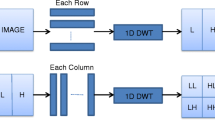Abstract
Purpose
In this paper, we present an automatic method to segment a whole heart and separate left and right heart regions in cardiac computed tomography angiography (CTA) efficiently.
Methods
First, we smooth the images by applying filters to remove noise. Second, the volume of interest (VOI) is detected by using k-means clustering. In this step, the whole heart is coarsely extracted, and it is used for seed volumes in the next step. Third, we detect seed volumes using a geometric analysis based on anatomical information and separate the left and right heart with power watershed. Finally, we refine the left and right sides of the heart using active contour model without edge, which used region-based information for a more accurate segmentation.
Results
In experimental results using twenty clinical datasets, the average segmentation error was less than 5%. The average processing time was 51.66±3.35 s.
Conclusions
The proposed method extracts the left and right heart accurately, demonstrating that this approach can assist the cardiologist.
Similar content being viewed by others
References
Schoenhagen P, Stillman AE, Halliburton SS, White RD. CT of the heart: principles, advances, clinical uses. Clev Clin J Med. 2005; 72(2):127–38.
Barandiaran I, Macía I, Berckmann E, Wald D, Dupillier MP, Paloc C, Graña M. An automatic segmentation and reconstruction of mandibular structures from CT-data. Lect Notes Comput Sc. 2009; 5788:649–55.
World Health Organization. The world health report: 2003: shaping the future. 20–3.
Rousseau O, Bourgault Y. Heart segmentation with an iterative Chan-Vese algorithm. preprint, 20–8.
Chan TF, Vese LA. Active contours without edges. IEEE T Image Process. 2001; 10(2):266–77.
Van Assen HC, Danilouchkine MG, Dirksen MS, Reiber J, Lelieveldt BP. A 3-D active shape model driven by fuzzy inference: application to cardiac CT and MR. IEEE T Inf Technol B. 2008; 12(5):595–605.
Takagi T, Sugeno M. Fuzzy identification of systems and its applications to modeling and control. IEEE T Syst Man Cyb. 1985; SMC-15(1):116–32.
Mitchell SC, Bosch JG, Lelieveldt BP, van der Geest RJ, Reiber JH, Sonka M. 3-D active appearance models: segmentation of cardiac MR and ultrasound images. IEEE T Med Imaging. 2002; 21(9):1167–78.
Ecabert O, Peters J, Schramm H, Lorenz C, von Berg J, Walker MJ, Weese J. Automatic model-based segmentation of the heart in CT images. IEEE T Med Imaging. 2008; 27(9):1189–201.
Funka-Lea G, Boykov Y, Florin C, Jolly M-P, Moreau-Gobard R, Ramaraj R, Rinck D. Automatic heart isolation for CT coronary visualization using graph-cuts. Conf Proc Int Symp Biomed Imaging. 2006; 1:614–7.
Grady L, Sun V, Williams J. Interactive graph-based segmentation methods in cardiovascular imaging. In: Paragios N, Chen Y, Faugeras, editors. Handbook of mathematical models in computer vision. Springer; 2006. pp. 453–69.
Kanungo T, Mount DM, Netanyahu NS, Piatko CD, Silverman R, Wu AY. An efficient k-means clustering algorithm: Analysis and implementation. IEEE T Pattern Anal. 2002; 24(7):881–92.
Couprie C, Grady L, Najman L, Talbot H. Power watershed: A unifying graph-based optimization framework. IEEE T Pattern Anal. 2011; 33(7):1384–99.
Gonzalez RC, Woods RE, Eddins SL. Digital image processing using MATLAB. 1st ed. Pearson Prentice Hall; 20–4.
Whitaker RT, Xue X. Variable-conductance, level-set curvature for image denoising. Conf Proc IEEE Image Proc. 2001; 3:142–5.
Perona P, Malik J. Scale-space and edge detection using anisotropic diffusion. IEEE T Pattern Anal. 1990; 12(7):629–39.
Sinop AK, Grady L. A Seeded Image Segmentation Framework Unifying Graph Cuts And Random Walker Which Yields A New Algorithm. Conf Proc IEEE I Conf Comp Vis. 2007; 1–8.
Mumford D, Shah J. Optimal approximations by piecewise smooth functions and associated variational problems. Commun Pur Appl Math. 1989; 42(5):577–685.
Kass M, Witkin A, Terzopoulos D. Snakes: Active contour models. Int J Comput Vision. 1988; 1(4):321–31.
Lorensen WE, Cline HE. Marching cubes: A high resolution 3D surface construction algorithm. ACM SIGGRAPH Computer Graphics. 1987; 21(4):163–9.
Zijdenbos AP, Dawant BM, Margolin RA, Palmer AC. Morphometric analysis of white matter lesions in MR images: method and validation. IEEE T Med Imaging. 1994; 13(4):716–24.
Author information
Authors and Affiliations
Corresponding author
Rights and permissions
About this article
Cite this article
Kang, H.C., Kim, B., Lee, J. et al. Automatic left and right heart segmentation using power watershed and active contour model without edge. Biomed. Eng. Lett. 4, 355–361 (2014). https://doi.org/10.1007/s13534-014-0164-9
Received:
Accepted:
Published:
Issue Date:
DOI: https://doi.org/10.1007/s13534-014-0164-9




